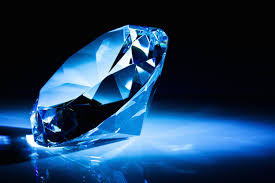How to Make Sure You Don’t Purchase a Blood Diamond
You found your perfect partner. You want to spend the rest of your life with them. Yay You are ready to propose and feeling confident. What about the ring? Do you want to get them something expensive or not so much? Ok, you decided on a diamond. So how do you ensure that it isn’t a blood diamond? Follow our tips to make sure your love is celebrated with an ethically-mined diamond!

Tip #1) Check into the history of the diamond.
Diamonds are mined in a rather rough form and then shipped to government diamond offices. When they arrive, their source is checked over extensively to make sure that they are in compliance with the Kimberley Process (KP) regulations which forbid the trade in “conflict diamonds” which are defined as “rough diamonds used by rebel movements or their allies to finance conflict aimed at undermining legitimate governments”.
Be aware that the KP does not ban diamonds that fund war crimes and crimes against humanity by government. These blood diamonds go around the regulations and are permitted to enter the global diamond market.
Tip #2) Know the limitations of the Kimberley Process.
In the 1990s, blood diamonds gained international attention through the world media during a brutal crisis in Sierra Leone. Other areas that are or have been touched by diamond-funded conflict include Palestine, Cote d’Ivoire, Angola, Liberia and the Democratic Republic of the Congo (DRC). Organizations such as the UN, governments, Amnesty International, Global Witness and others saw the need for a global system to ensure blood diamonds did not enter the legitimate diamond supply chain. The system that they agreed upon – the Kimberley Process – fell short of that goal as its remit was restricted to “conflict diamonds”. The Kimberley Process involves:
Shipments of rough diamonds being exported and imported in secure containers. Unsealed containers or those that have been tampered with are either turned back or impounded by customs officials.
Shipments being accompanied by uniquely numbered, government-validated Kimberley Process certificates. These certificates are used to authenticate that the diamonds are KP compliant and must accompany the diamond each time it changes hands. This is called the System of Warranties. The certificates must be forgery resistant and describe the content of the shipment.
Tip #3) Be aware of the limitations of the System of Warranties.
This system of warranties has no legal standing. It was put together by the World Diamond Council to create the illusion that the KP regulations extend to cut and polished diamond. It allows sellers of diamonds to self-certify the diamonds they sell as conflict-free based on the fact that the rough diamonds they were crafted from are KP compliant. The system facilitates the trade in cut & polished diamonds that generate revenue used to fund war crimes and crimes against humanity.

Tip #4) Know what you should ask your jeweler to ensure you purchase a conflict-free diamond.
If you are concerned with whether or not your diamond has funded human rights violations at any stage along the production pipeline, consider asking your jeweler the following questions:
Do you know where the diamond was mined, cut and polished?
Can you prove that the diamond was not sourced in an area where rebel groups of government forces use revenue from diamonds to fund breaches of international human rights law or international humanitarian law?
Tip #5) Be wary of older diamonds.
Unless you’re dealing with a family heirloom, you’ll want to be especially careful about the background of any diamond that is more than a decade old. Blood diamond rates were much higher in previous year, which means an older diamond has a probability of being tainted. While the proceeds from your purchase of such a diamond likely would not contribute to civil war, many people want to avoid diamonds with a history tied to violence.
Tip #6) Buy from trusted retailers.
Reputation goes a long way in the jewelry game. If a particular chain has a history of absolutely avoiding blood diamonds, they aren’t likely to jeopardize that image anytime soon. Likewise, if a given store has been known to dabble in blood diamonds, then you’ll know to avoid it. Given the historical prevalence of conflict diamonds, the chances are good that most major retailers have sold them at some point in time. Just always make sure to do your research before shopping somewhere because salespeople won’t always have all the necessary information.

Tip #7) Request documentation.
You should be able to find out if a particular stone is certified by the Kimberley Process. If it isn’t, and also lacks other supporting documentation that might put your mind at rest, it’s probably best to pursue other options.









